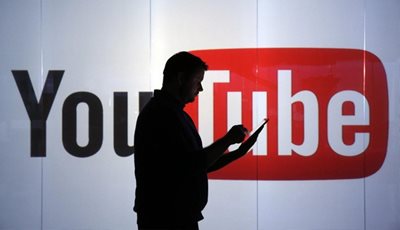Oracle Takes A “Shot” & Acquires Brand Safety Platform, Grapeshot
By Gabriella Pirrone
April 27, 2018
acquisition, Brand Safety, Branding, Digital Experience, Digital Marketing, Facebook, Google, Grapeshot, Moat, online advertising, Oracle, Pandora, Pinterest, Snapchat, social media
On Tuesday, Oracle announced their acquisition of Grapeshot, a platform built to help ensure ‘brand safety’ as well as contextual solutions targeting, RTB, ad-serving, optimization, attribution, audience targeting, programmatic, real-time data, brand safety advertising, marketing technology, martech, and adtech to over 5,000 of the world’s leading marketers. The terms of the deal have not yet been disclosed.
The startup had a $59M valuation as of May 2017, according to Pitchbook, with $22.4M in total funding from investors including IQ Capital Partners and Albion.
 In a open letter to customers, Oracle stated: “The acquisition of Grapeshot will dramatically expand Oracle Data Cloud’s ability to improve marketing outcomes for our partners worldwide by adding the important dimension of context to Oracle Data Cloud’s expertise in audiences and measurement.”
In a open letter to customers, Oracle stated: “The acquisition of Grapeshot will dramatically expand Oracle Data Cloud’s ability to improve marketing outcomes for our partners worldwide by adding the important dimension of context to Oracle Data Cloud’s expertise in audiences and measurement.”
To give a quick recap of the report:
Grapeshot's Contextual Intelligence Platform enables the rapid creation of highly-customized segments that allow marketers and their agencies to confidently:
-
Avoid unsafe content that will damage brand equity, and close the loop via Moat Measurement
-
Extend global audience reach by targeting the most relevant context, including late-breaking news and trending themes, to complement Oracle Data Cloud’s custom audience segments
-
The acquisition of Grapeshot will dramatically expand Oracle Data Cloud's ability to improve marketing outcomes for their partners worldwide by adding the important dimension of Context to Oracle Data Cloud's expertise in Audiences and Measurement.
Every month it’s said that over 38 billion programmatic ad impressions are enhanced using Grapeshot’s Contexual Intelligence Platform in dozens of languages which has grown well over 100% year over year. Just over a year ago, Oracle also acquired Moat, which the company has said will help “close the loop” with this recent purchase of Grapeshot.
Moat, which is based in New York, helps digital ad platforms like Facebook, Google, Pinterest, Pandora and Snapchat measure the results of online brand campaigns. It’s become a go-to vendor for such measurement needs in recent years, and its garnered $67.5 million in funding from investors.
Combined, the two technologies can track fraud and viewability (Moat), as well as metrics like engagement and how long people hovered or dwelled on a specific part of the page (Grapeshot).
John Snyder, Grapeshot CEO, in a note to customers commented on the news to say: “We expect Oracle’s continued investment in Grapeshot will deliver more functionality and capabilities at a quicker pace, as well as provide better integration and alignment with Oracle Data Cloud’s other product offerings,”
The startup company was founded in 2006 in Cambridge, England by John Snyder and Dr. Martin Porter where they met at the University of Cambridge. While they studied there, they realized that there was a new generation of algorithms and multiple keyword search that could benefit not only buyers but sellers in the digital advertising world. It’s said that through the keyword analysis and fluid categorization of huge volumes of webpages, Grapeshot got its first big break and started with a few UK publishers. By 2011, these publishers included large companies such as Mail Online, MSN, Trinity Mirror, Reuters and Incisive Media. These Publishers used Grapeshot to segment their inventory into virtual channels defined by the brands own keywords and the rest was history.
What Brand Safety Means to Digital Agencies
You may remember just last week when YouTube took a major beating. CNN ran an investigation of hundreds of ads from over 300 companies and organizations which included tech giants, major retailers, newspapers and government agencies that ran YouTube channel ads promoting white nationalists, Nazis, pedophilia, conspiracy theories and North Korean propaganda.
 I mention this because it is a perfect example for what Grapeshot’s platform aims to pair advertisers with locations using criteria and tech that can help avoid mismatches like this one.
I mention this because it is a perfect example for what Grapeshot’s platform aims to pair advertisers with locations using criteria and tech that can help avoid mismatches like this one.
YouTube did respond to the report and stated: “When we find that ads mistakenly ran against content that doesn’t comply with our policies, we immediately remove those ads,” a YouTube spokeswoman said.
“We know that even when videos meet our advertiser friendly guidelines, not all videos will be appropriate for all brands. But we are committed to working with our advertisers and getting this right.”
Brand safety for these large companies is detrimental and has emerged as a critical point in the adtech sector in recent years. Companies have definitely come to the realization to their ads appearing in environments that clash not only with their values as a retailer but more importantly, with their brand are a big issue.
Joshua Lowcock, Chief Digital & Innovation Officer and Global Brand Safety Officer at UM Worldwide gave some solid points when discussing the topic of important steps brands should be taking and asking themselves.
“Brand safety doesn’t just affect one market. It’s worldwide in nature, in scale and affects global partners,” he said. “This role is aimed at holding partners globally accountable because right now when a brand safety issue occurs in one market, getting platform providers to respond in every region requires global executive oversight.
Clients prefer the cheaper inventory: not the cheapest, but there is a lot of pressure on price. There’s always that price trade-off; if you want cheaper media, you’re in a more risky environment,” said Lowcock. He continued to say: “If I give a one to ten scale – one is very conservative and ten is not caring where your ad goes – and a client says I want the price of ten and the brand safety of one, [they need to know] they’re mutually exclusive.”
It’s said that in the past 12 months, brand safety breaches caused 95% of UK CMOs to review their digital advertising strategies, and three-quarters (74%) of U.S. advertisers to suspend investment in ad networks. So, it’s no surprise safeguarding brand reputation is a top priority across the digital advertising ecosystem for 2018.
Ending Notes
Brand safety is one of those things that needs to be a prominent concern for organizations that might not get enough attention. Thanks to the world of social media, and online conversation, good or bad catching on like wildfire, one oversight in the context, content or placement of digital media could really damage a business and if a media heavyweight like Youtube has experienced issues, no one is immune to it.
I really like what Joshua Lowcock says above in the price tradeoff, the old adage with good, fast or cheap you only get to pick two that can apply to brand safety as well and Oracle understands this need and wanted to quickly ensure they had the right capabilities in place by acquiring Moat and then Grapeshot to round out their new additions. It also no coincidence it came at a time of un-certainty for companies especially with what has been happening with the Facebook and Cambridge Analytica scandal.
Related Oracle News

Gabriella Pirrone
Gabriella is the Digital Marketing Assistant for CMSC Media. She brings a wealth of knowledge from not only a CMS perspective but also content, SEO and eCommerce. She enjoys everything social media and staying ontop of the latest trends in the digital marketing world.